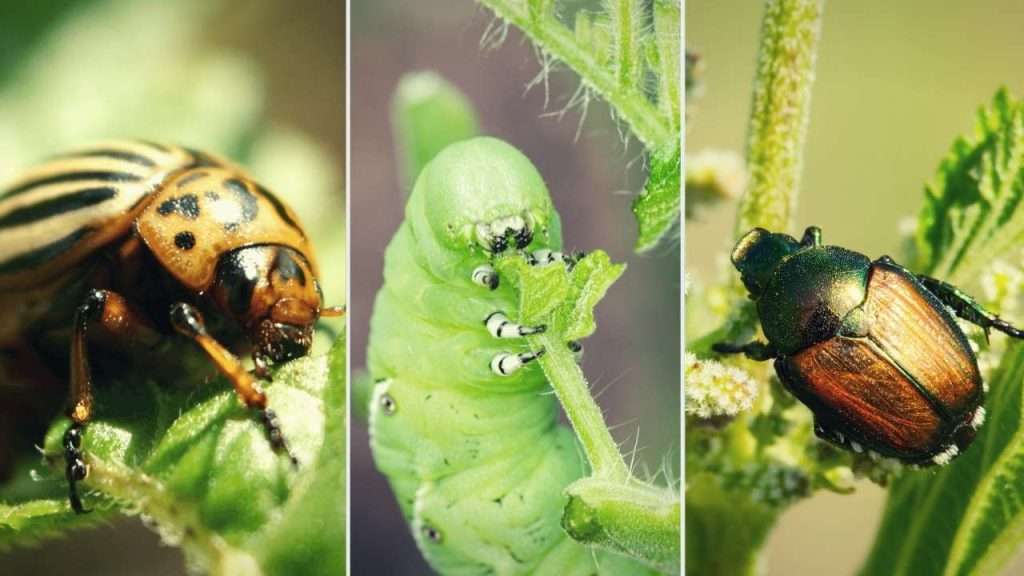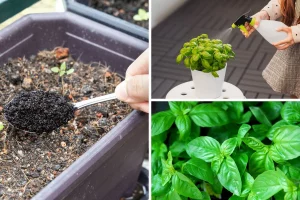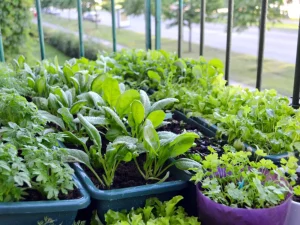Gardening is a fun and fulfilling hobby that allows people to connect with nature, create beautiful landscapes and grow their own food. But every gardener knows how difficult it can be to get rid of pests in the garden. These pests can be anything from insects to small animals, and they can cause a lot of damage to well-cared for plants. In this detailed guide, we discuss common plant pests, how to recognize them and, most importantly, how to eliminate them and prevent them from returning. With the right information, gardeners can protect their favorite plants and create parks that do not attract pests.
How to Know Common Garden Pests:
Insects: Little Troublemakers
Insects are probably the most common and diverse type of garden pests. Some of them are aphids, caterpillars, bed bugs and ants. Aphids are small insects that feed on plant sap. This makes the plant weaker. The caterpillars eat the leaves and kill the plant. Beetles such as the Colorado potato beetle prey on certain plants, while ants can damage the garden environment.
Mammals: Unwanted Visitors
Mammals such as rabbits, deer and mice are bigger pests. Rabbits eat young shoots and leaves, which is harmful to seedlings. Deer will eat the entire garden if no one stops them. Mice and voles dig underground tunnels to scavenge plants and eat their roots.
Disease-Carrying Pests: The Silent Threat
Some pests, such as ticks and mosquitoes, can cause diseases in plants and people. Ticks attach to animals and plants and transmit diseases such as Lyme disease. Mosquitoes lay eggs in standing water and can spread diseases such as West Nile virus.
Identifying Garden Pests:
Pay Close Attention to Things
Check plants regularly for signs of damage. Look for leaves that are chewed, faded, mottled with different colors or have holes. These are usually signs of the presence of pests. Check the undersides of leaves, where aphids and spider mites like to hide.
Nets and Trap
Use nets and bait specifically designed for the pests you want to eliminate. Yellow sticky traps catch moving insects such as mealybugs, while pheromone traps attract specific pests such as moths. Rodents can be deterred by using safe, non-toxic foods using bait stations.
Companion Planting
Companion planting is a method of repelling insects by planting certain plants together. For example, marigolds repel insects, and growing basil near tomatoes makes them taste better and repel insects. Smart use of companion plants can reduce pest problems.
Effective Way to Get Rid of Pests:
Natural Enemies: Natural Pest Control
Add native predators such as ladybugs, lacewings and beetles that eat other insects. These insects feed on plant pests, which is a natural and environmentally friendly way to get rid of them. Keeping birds and toads in your garden can also help control insect populations.
Neem Oil and Horticultural Soap: Safe Insecticides
Neem oil, derived from the neem tree, is a natural herbicide that prevents pests from feeding and laying eggs by disrupting their hormones. Horticultural soaps work well against soft-bodied insects such as aphids and caterpillars. Both options are safe for plants, beneficial insects and the world as a whole.
Beneficial Nematodes: Eliminate Pests in the Soil
Beneficial nematodes are small organisms that eat insects that live on Earth, such as larvae and larvae. When placed on land, they actively seek out and kill pest larvae, reducing their numbers. This method is effective in removing insects such as root maggots.
Physical Barriers: Fencing and Row Covers
Larger pests, such as deer and rabbits, can be repelled by physical barriers such as fences and row covers. Use chicken wire fencing and make sure the fencing is high enough that people cannot climb over it. Row covers made of thin fabric keep pests away from your plants and allow sunlight and water to pass through.
Natural Insect Repellent: Diatomaceous Earth
Diatomaceous earth is a fine powder made from fossilized algae that kills hard-shelled insects. When insects come into contact with them, the sharp fragments can damage their bodies, causing them to lose moisture and die. It works well and is safe for use against various plant pests.
Preventing Future Infestations:
Healthy Soil and Plants: The Best Defense
Pests are less likely to harm plants that are well nourished. Focus on keeping the planet healthy through composting and providing the right amount of water. Healthy and strong plants are more resistant to diseases and pests.
Crop Rotation: Breaking the Pest Cycle
Rotate your plants every year to prevent certain pests from taking root in the soil. By moving crops, gardeners disrupt the life cycle of pests that feed on certain plants. This makes the plant less likely to become infected.
Garden Hygiene: Mulching and Pruning
Mulch your garden with organic materials such as straw or wood chips to prevent weeds from growing and keep insects out. If the plant is pruned regularly, pests cannot move from one part of the plant to another.
Proper Watering: Avoiding Standing Water
If overwatered, the water can pool and become a breeding ground for mosquitoes and other insects. Watering with a drip or soaking hose keeps the soil moist without creating undrained pools.
Companion Planting and Polyculture: Natural Pest Prevention
Continue to use methods such as companion planting, and consider polyculture, where different crops are grown in the same area. Polyculture changes the way pests behave, making it more difficult for insects to find their chosen host.
Conclusion:
Identifying and controlling common garden pests is an important aspect of successful gardening. With the right information and a variety of eco-friendly gardening techniques, people can grow healthy gardens that are pest-resistant and use fewer harmful chemicals. By using natural enemies, safe pesticides and preventative measures, gardeners can not only protect their plants but also help keep the environment healthy.
If you want a garden full of plants, it’s important to know how to deal with pests. By using these techniques, gardeners can care for their plants, increase biodiversity, and create thriving gardens that demonstrate how people and wildlife can live in harmony. So use what you learn here as a guide to ensuring your garden maintains its beauty, productivity and vigor, even when common garden pests are around.
FAQs:
1. How do gardeners identify common pests in their gardens, and what signs should they look for to diagnose pest-related problems in their plants?
Discover subtle clues and tell-tale signs that indicate the presence of pests in your garden. Learn how to distinguish between different pest-related problems and implement early detection strategies to effectively protect your plants.
2. What are the most effective natural ways to control common garden pests? How can gardeners seamlessly integrate these technologies into their gardening practices?
A deep dive into the world of natural pest control, with techniques such as introducing beneficial insects, using neem oil and using physical barriers. Discover practical ways to implement these methods and ensure your garden is pest-free, without using harmful chemicals.
3. How can gardeners create a pest-resistant garden environment through soil health, proper watering and strategic planting?
Discover the role of healthy soil, optimal watering methods, and strategic plant placement in creating a garden environment that naturally repels pests. Learn the science behind these practices and their impact on pest prevention.
4. What role do companion plants and crop rotation play in pest control? How can gardeners use these techniques to disrupt the pest cycle?
Discover the secrets of companion planting and crop rotation as effective methods of pest control. Discover which plants complement each other and how rotating crops disrupt the life cycle of pests, ensuring the long-term health of your garden.
5. How do gardeners balance pest control and environmental protection, ensuring their gardening practices are sustainable and environmentally friendly?
Discuss the ethical issues of pest control and explore ways to balance effective pest control with environmental protection. Discover how eco-friendly practices not only protect your garden, but also contribute to the wider ecosystem and promote sustainability and biodiversity.



